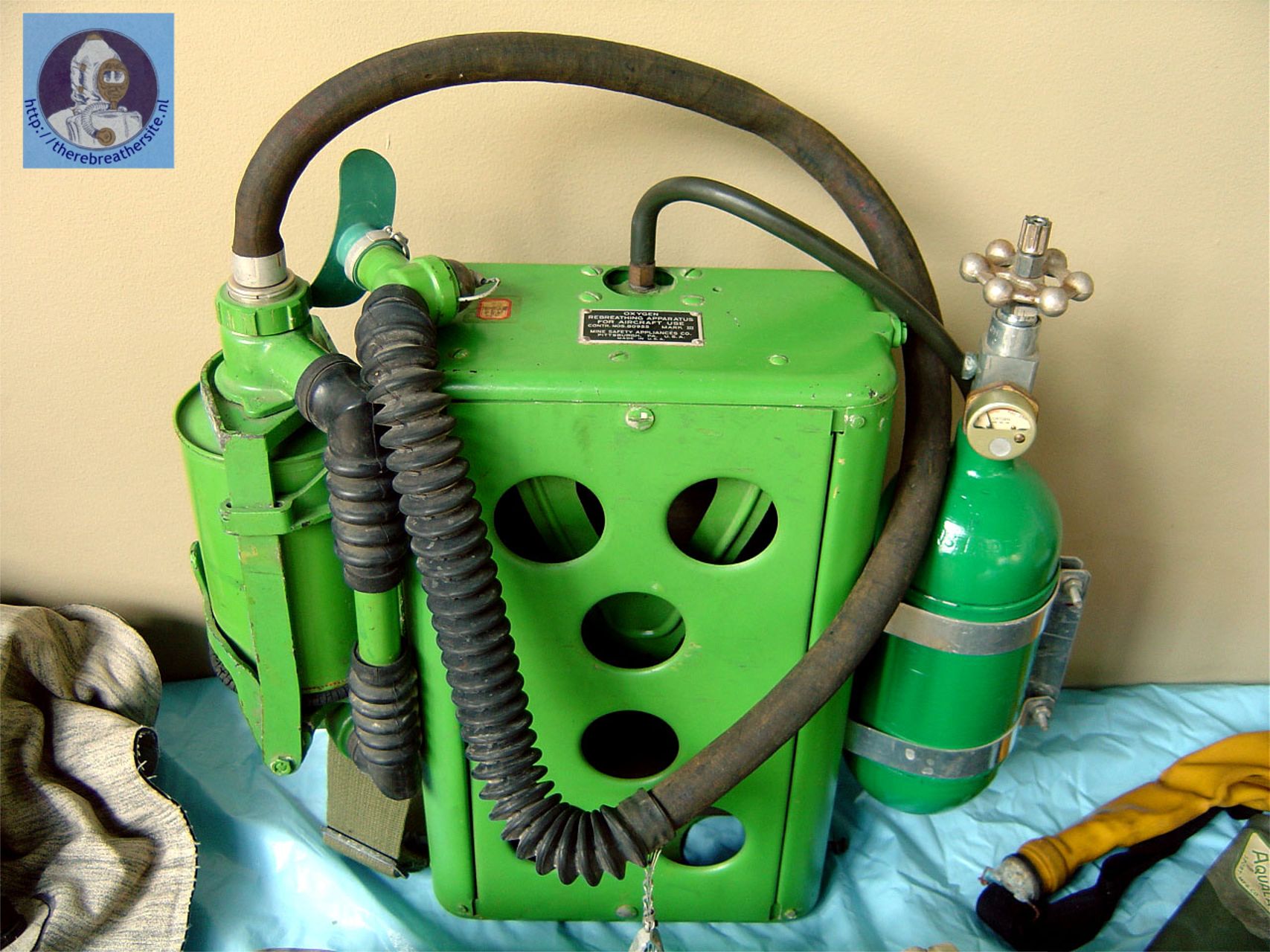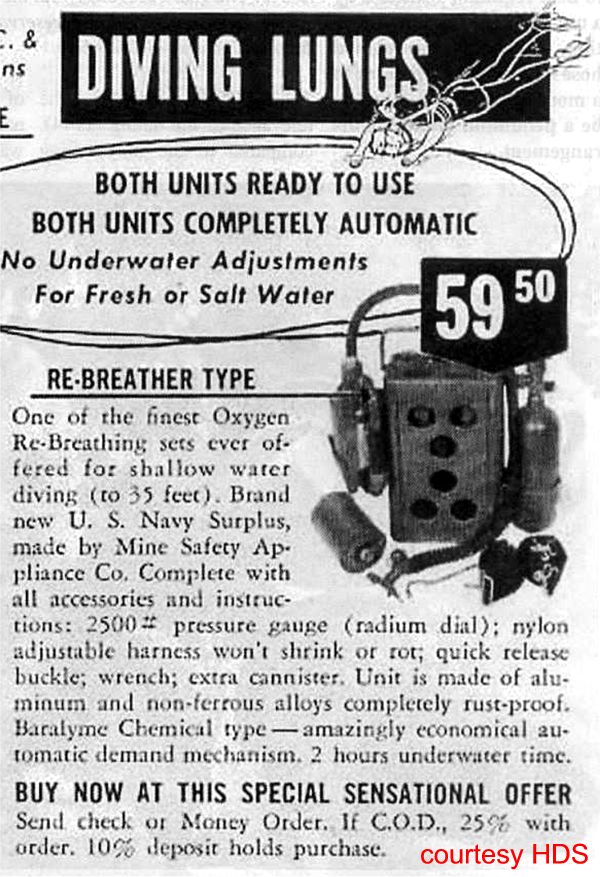urmaddad
Contributor
I'm curious as to what make this scuba diving equipment is. The only clue is a date of 1954.

Welcome to ScubaBoard, the world's largest scuba diving community. Registration is not required to read the forums, but we encourage you to join. Joining has its benefits and enables you to participate in the discussions.
Benefits of registering include


I know nothing about rebreathers, but might there be some connection between the devices in the picture and the war surplus MSA Mark III oxygen rebreathers at Photos MSA Mark III? At the very least, the holes in the housing seem to match.

Only one of there models were for scuba use. The rest for miners.
